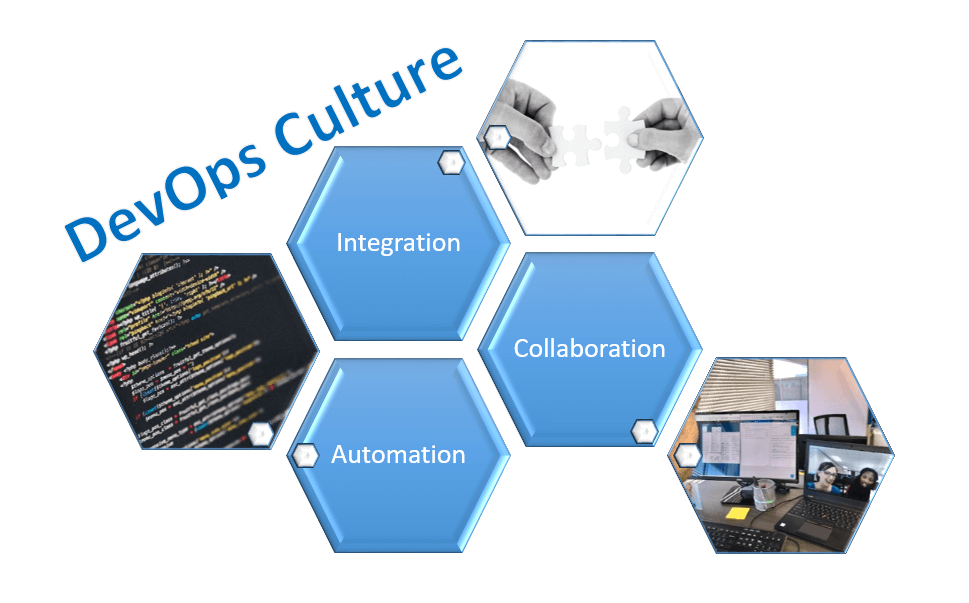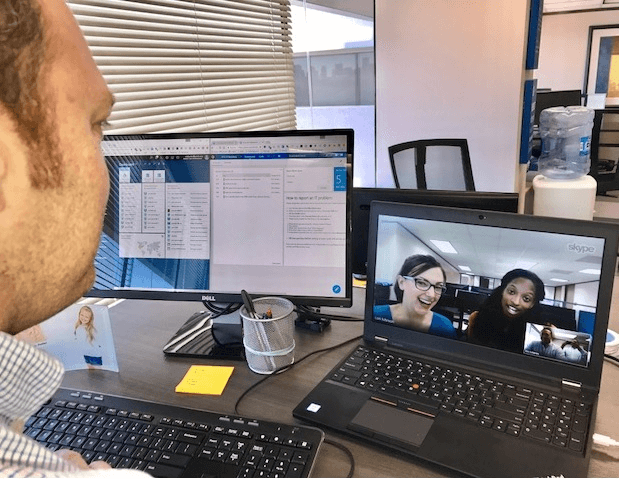What is DevOps? It's what started as a buzzword and quickly transformed into a movement. DevOps is the union of development and operation teams at every step of the work cycle. DevOps originated as a means to break down walls that hinder production. Previously, software development teams would work separate from operations teams. This allowed for issues with long deployment cycles and inflexibility. Now with the merge of development and operations, it has evolved into a culture promoting collaboration and autonomy.
Why does DevOps culture continue to garner so much attention? The main reason is productivity.
The latest Puppet State of DevOps Report reveals teams embracing DevOps culture experience improvements in areas from increased deployments, lower failure rates and time spent on unplanned work. DevOps can accomplish these improvements in several different ways that are unique to each environment.
For PCIC, it means utilizing the attributes of continuous integration with collaboration, automation and culture.
To assimilate that culture, we started from the bottom up. We used resources built on the premise of collaboration. Applications such as Visual Studio, Office 365, SharePoint, and Skype were all integrated into our work from the beginning. These apps work together to create a seamless team sharing environment. Later, we added Yammer to the mix. This created a social media style environment for ideas, meetings and building overall rapport between team members. In the future, we are looking at integrating Microsoft Teams into our work culture. Teams would help to streamline discussions, videoconferencing and document sharing.
By involving the development team in nearly every step of the infrastructure setup process, we were able to create a virtual environment optimized for production. Microsoft Azure was selected to improve ease of use, automation and metrics. We're able to quickly replicate servers and environments using Azure's IaaS (Infrastructure as a Service) via the built-in portal or code. It has tools to allow for encrypted, georedundant backup and recovery options.
The desire for faster and more efficient feedback drove us to train our social workers in Visual Studio. The EMR (Electronic Medical Record) application is being continually developed and improved. So, we trained the care coordination team on how to add bugs and features to the process. This allows the development team to quickly adjust coding prior to releases and decreased the time needed for feedback during meetings.
Recently I noticed something amazing. Our healthcare coordination team was adopting a form of DevOps in its work. The team is working to eliminate the walls in the medical community that impede healthcare. They were bringing patients, their different doctors and insurance companies together to break these barriers. Only through that collaboration were the different pieces of the problem and solution visible from both sides. That essential dynamic is now mirrored in our care coordination and tech teams.
Resources:
https://www.ciosummits.com/Online_Assets_Puppet_2016_State_of_DevOps_Report.pdf
https://devops.com/surprise-broad-agreement-on-the-definition-of-devops/
http://www.rightscale.com/lp/devops-trends-report





